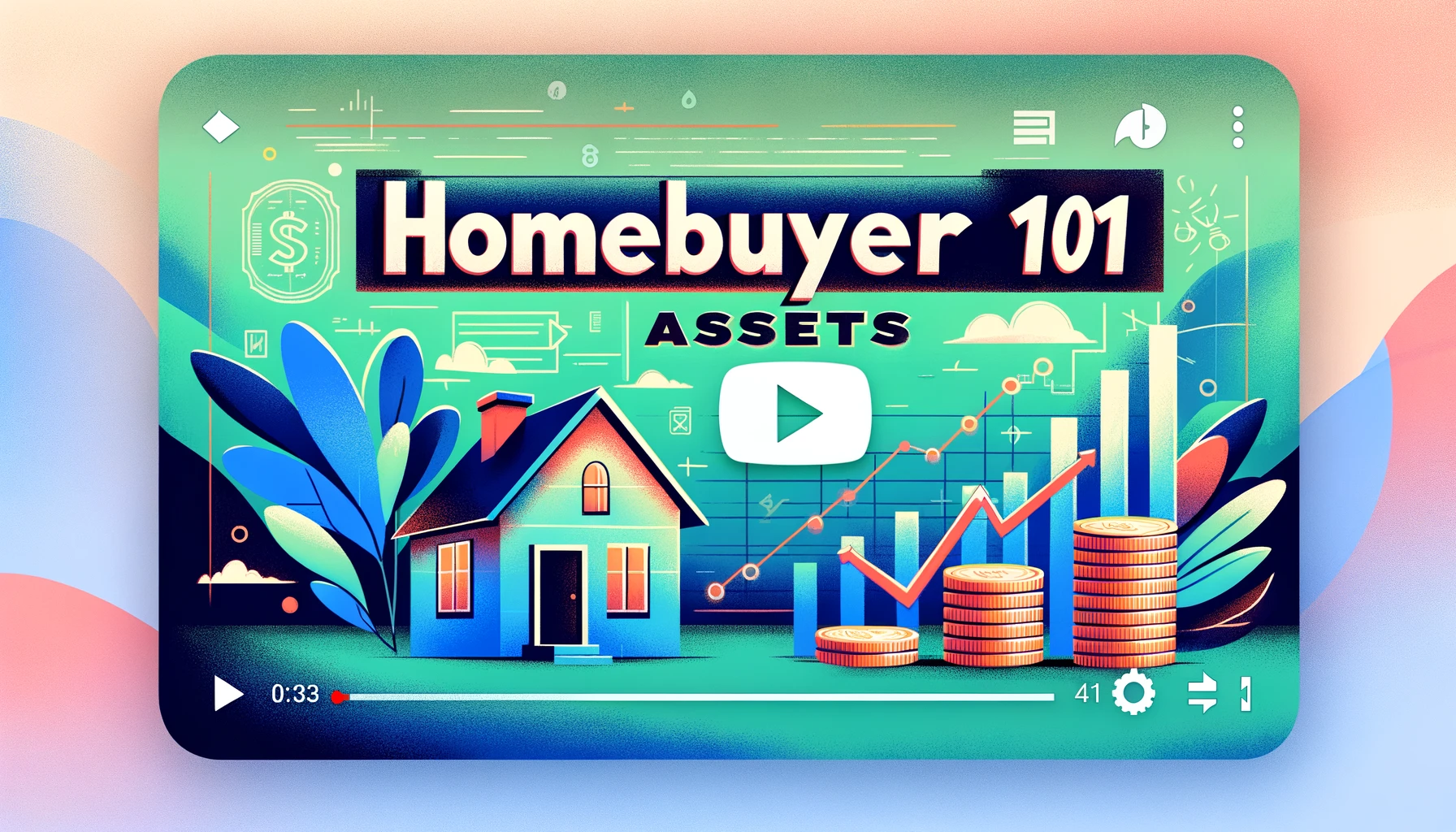6 minute lesson Lesson Summary Importance of timely document submission for your loan Types of…
Homebuyer 101: Most Common Non Traditional Mortgages
Lesson Summary
-
Alternative lending options for homebuyers are discussed in this blog post.
-
Four types of non-traditional mortgages are highlighted: bank statement loans, 1099 loans, profit and loss loans, and DSCR loans.
-
Bank statement loans are for self-employed individuals and require 12 to 24 months of bank statements.
-
1099 loans are available for gig workers who have been with the same company for 2 years.
-
Profit and loss loans allow business owners to submit a statement compiled by a third-party CPA.
-
DSCR loans are specifically for investment properties and use projected rental income for income qualification.
Navigating the traditional mortgage market can often be a complex maze for many potential homebuyers in Colorado Springs. Between deciphering credit scores and understanding down payment nuances, the journey towards homeownership can feel daunting.
But there’s good news on the horizon.
As we edge into 2023, innovative lending solutions are emerging, tailored specifically for those with non-traditional income streams. These alternative mortgages offer a path forward where conventional loans may not.
Bank Statement Loans Unpacked
Navigating the realm of non-traditional mortgages, bank statement loans emerge as a beacon for the self-employed and entrepreneurs. Dispensing with the usual tax documentation, these loans evaluate financial stability through a clear lens of bank activity. Borrowers can present 12 to 24 months of bank statements, providing undeniable proof of consistent income streams without the need for W-2s or tax returns.
Akin to deciphering a financial fingerprint, bank statement loans offer a unique insight into an applicant’s economic narrative. They unlock opportunities for those whose income may ebb and flow, yet steadies over time. It’s a tailored solution for the modern business owner, creating avenues of ownership that align with their unconventional earning patterns. By evaluating deposits and cash flow, lenders can extend credit where traditional metrics fail to capture the full picture.
Eligibility for Self-Employed
For self-employed individuals, bank statement loans provide a lifeline to mortgage qualification, allowing business activities to stand as proof of income. Essential documentation includes monthly bank statement nuances rather than standard paycheck stubs.
Eligible self-employed applicants are typically required to have at least two years in business, providing a clearer illustration of income sustainability. This duration underpins a more comprehensive assessment, promoting financial fidelity for loan consideration.
Proven cash flow is key to unlocking mortgage possibilities for the self-employed.
Consider the bank statement loan a flexible mortgage alternative, calibrated for the unique income patterns of self-employed professionals. Without traditional payroll evidence, a flourishing bank activity showcases financial health in a language lenders understand, facilitating your path to homeownership.
Analyzing 12-24 Months of Transactions
The breadth of a borrower’s financial management is unveiled through meticulous review of bank transactions. This longitudinal gaze on inflows and outflows fosters a nuanced understanding of fiscal health and sustainability.
A 12-month statement offers insight, yet a 24-month span provides a robust narrative of financial stability. Money movement trends become pronounced over time, offering lenders a tapestry of transactional behavior that predicts future solvency.
Peering into these snapshots of banking activity, analysts discern patterns that traditional metrics may overlook. Seasonal fluctuations, irregular large deposits, and a client’s liquidity—the lifeblood of solvency—are all laid bare across the expanse of time.
Lenders look for constancy and upward trajectories in these statements, signals that can override credit hiccups or atypical income sources. It’s the depth, not just the breadth, of your bank statements that matters in this financial x-ray.
This process illuminates your economic narrative, crafting a richer context for lenders to evaluate risk and potential. It’s bespoke financial storytelling with numbers—your unique fiscal journey.
Benefits: High LTV and No MI
Loan-to-Value ratios soar in this landscape.
Lenders championing non-traditional mortgages often provide high Loan-to-Value (LTV) ratios. This means buyers can secure a loan for a higher percentage of the property’s value. Consequently, the entry threshold is lowered, allowing more individuals to participate in homeownership without a hefty down payment.
Minimal cash outlay marks a seismic shift.
The absence of Mortgage Insurance (MI) is a financial elixir for homebuyers. By circumventing this extra cost, buyers can apply funds toward their home equity or other investment opportunities. This propels buyers into equity building faster, maximizing the return on their investment.
Savings from no MI can be substantial.
High LTV and lack of MI open opportunities even in competitive markets. In a city like Colorado Springs, where the real estate landscape is both vibrant and challenging, these loan configurations offer a significant strategic advantage for savvy buyers who aim to capitalize on the market’s offerings.
Exploring 1099 Loans
A 1099 loan emerges as a beacon for gig workers and independent contractors, those forging their earnings outside of traditional wage structures. As you harness income from varied sources, this loan type recognizes the tapestry of your earnings, placing less weight on the conventional proof of income that anchors more orthodox loan applications.
Pivoting to this non-traditional mortgage could serve as your “financial Swiss Army knife.” It’s versatile, tailored to capture the essence of your work, amalgamating income reports that reflect true earnings. With a focus on stability and continuity of your entrepreneurial endeavors, 1099 loans extend a hand to those whose income streams may not be straight-lined but are nonetheless robust.
Qualifying as a Gig Worker
In the gig economy, consistent earnings are key for home financing.
- Ensure continuity by working with the same gig provider for a minimum of two years.
- Gather your income documentation, compiling all relevant 1099s that demonstrate your income stream.
- Discuss your situation with a loan officer who understands the nuance of non-traditional income.
A 1099 loan translates your diversified income into a viable path toward homeownership.
Diligent preparation of your financial portfolio positions you advantageously for a 1099 loan application.
Income Verification Without Tax Returns
Navigating alternative mortgage pathways without traditional tax documents is absolutely viable.
- Bank Statement Loan: Suitable for the self-employed, utilizing 12 to 24 months of bank statements for income verification.
- 1099 Loan: Tailored for gig workers consistently contracted with the same company for at least two years, using 1099 statements.
- Profit and Loss Statement Loan: For seasoned business owners, a third-party CPA compiled profit and loss statement suffices.
- Debt Service Coverage Ratio (DSCR) Loan: Ideal for real estate investors, predicated on projected rental income rather than personal income.
These loans are tailored to manifest the full scope of your earning potential.
Each program is expertly designed to affirm your financial footprint, expanding the horizon of home ownership opportunities.
Profit and Loss Statement Strategy
When it’s time to secure financing as a business owner, the Profit and Loss (P&L) Statement Loan emerges as a formidable ally. With a comprehensive profit and loss statement curated by a certified third-party CPA, this strategy illuminates the financial health and performance of your business, bypassing the need for traditional income documentation. It is a testament to the stability and profitability that lenders seek, unlocking mortgage opportunities that align with your entrepreneurial accomplishments.
This approach is especially proficient for long-standing business owners whose tax documentation may not fully capture the dynamism of their operations. By presenting a meticulously compiled P&L statement, you allow lenders to gauge the true vigor of your business income, streamlining your path to securing a suitable mortgage. It encapsulates a fiscal narrative that could be the key to unlocking the doors to your new property.
Business Owner Income Verification
For self-employed individuals, income verification presents unique challenges.
Requiring precision and expertise, the Bank Statement Loan tailors to entrepreneurs who manifest steady income through bank transactions rather than traditional paychecks. By examining 12 to 24 months of bank statements, lenders gain insight into cash flow consistency, assuring them of your financial reliability. This method favors the business owner’s real-time monetary influx over historical tax documents.
Furthermore, when a business owner’s tax returns are complex, the 1099 Loan serves as an efficient alternative. This option focuses on the income reported to the IRS via 1099 forms, typically issued to independent contractors and freelancers. It offers an avenue for those with variable but reportable income to validate their earnings and become eligible for mortgage approval.
For more nuanced cases, the Debt Service Coverage Ratio (DSCR) loan assesses an investment property’s potential through its projected rental income. Perfect for real estate investors, this method disconnects personal income and debts from the equation, spotlighting the investment’s financial performance. The DSCR approach paves the way for investors who look beyond traditional mortgage constraints, providing flexibility and focus on property profitability.
Third-Party CPA Importance
Engaging a third-party Certified Public Accountant (CPA) ensures impartiality and credibility to your financial snapshot, especially in the preparation of Profit and Loss (P&L) statements required for mortgage qualification.
A CPA’s endorsement adds weight to your application, demonstrating due diligence in financial documentation.
Moreover, lenders trust CPA-compiled documents as they adhere to standardized accounting principles and attest to your financial integrity.
Lenders may also perceive less risk when loan decisions are based on third-party verified information, increasing your chances of approval.
A third-party CPA review of your P&L can uncover insights and opportunities that may boost your loan eligibility, demonstrating a more accurate reflection of your business’s fiscal health.
Ultimately, a CPA’s involvement can streamline your mortgage process, offering expert financial clarification that could pave the way for a successful home purchase.
DSCR Loans for Investors
For savvy investors targeting Colorado Springs’ promising real estate market, Debt Service Coverage Ratio (DSCR) loans are a strategic financing tool. Unlike traditional mortgages that prioritize personal income and credit history, DSCR loans focus exclusively on the property’s income-generating potential. This loan assesses the monthly rental income versus the property’s debt obligations, ensuring the investment can self-sustain financially without heavily relying on the borrower’s personal financial situation.
DSCR loans are particularly advantageous for investors with multiple income properties or irregular income streams. By bypassing personal debt-to-income ratios, these loans simplify the qualification process, allowing investors to expand their portfolio based on the assets’ performance rather than their individual financial profile.
Rental Income as Qualification
Navigating the complexities of mortgage qualification can be daunting, but rental income offers an achievable path to homeownership. It shifts the focus from personal income to property potential, providing a valuable leverage for investors.
The property’s projected rental revenue becomes the linchpin of this approach. It must align with the lender’s requirement for loan approval.
Lenders evaluate the anticipated income against the property’s monthly mortgage obligation, including taxes, insurance, and homeowner association fees, if applicable. This ensures the investment’s viability, using a formula known as the Debt Service Coverage Ratio.
Utilizing rental income for qualification is particularly beneficial for properties in areas with high rental demand, such as Colorado Springs. It allows for a broader consideration of income sources and property performance, offering a strategic pathway to expand your real estate investments. Importantly, this method aligns with an investor’s goal of leveraging income-producing assets rather than personal earnings statements.
Ignoring Personal Debt-to-Income Ratio
Navigating mortgage options means understanding various qualification requirements, among them, the traditional debt-to-income (DTI) ratio, which can make or break your chances.
- Debt Service Coverage Ratio (DSCR) loans: Prioritized rental income over personal DTI.
- Bank Statement loans: Focus on cash flow from business accounts, not personal income.
- 1099 loans: Suited for gig workers, with emphasis on client payments versus salaries.
- Portfolio loans: May offer flexibility on personal DTI in exchange for higher down payments or interest rates.
In non-traditional lending, avenues like DSCR sidestep your personal DTI, a relief for those with complex financial portraits.
These alternatives often come with different risk assessments and terms, tailored to accommodate a variety of investment strategies and borrower profiles.



